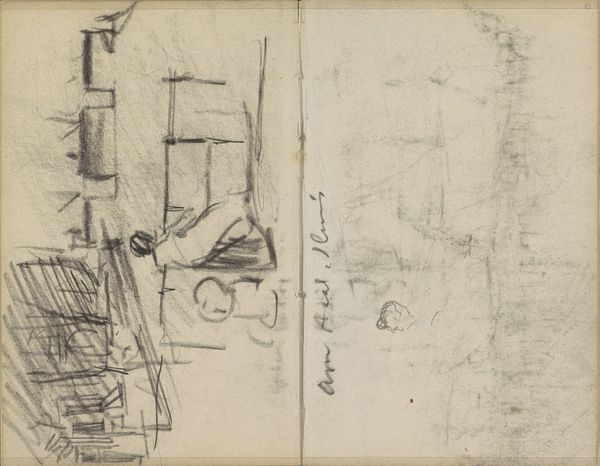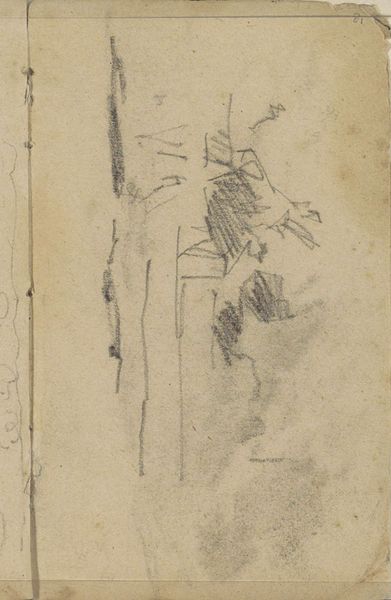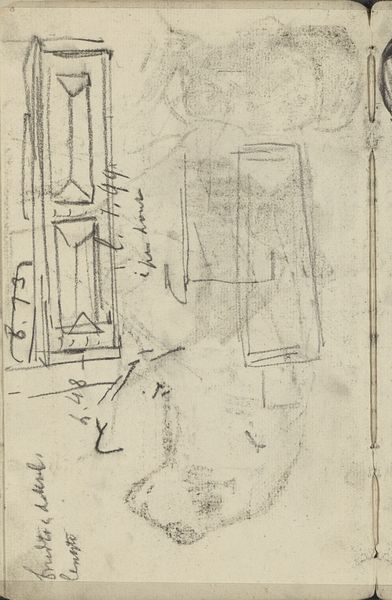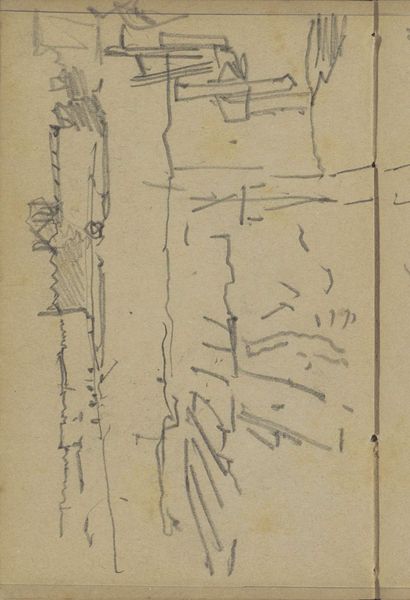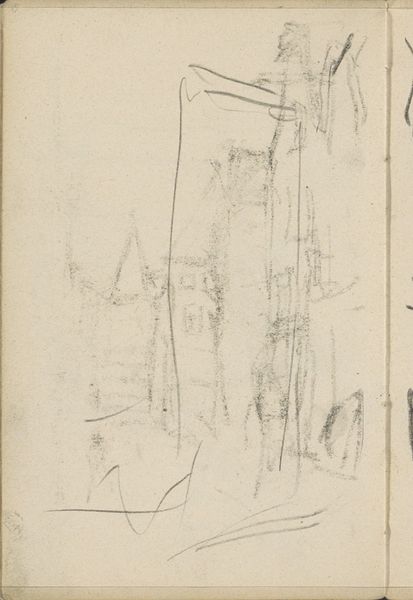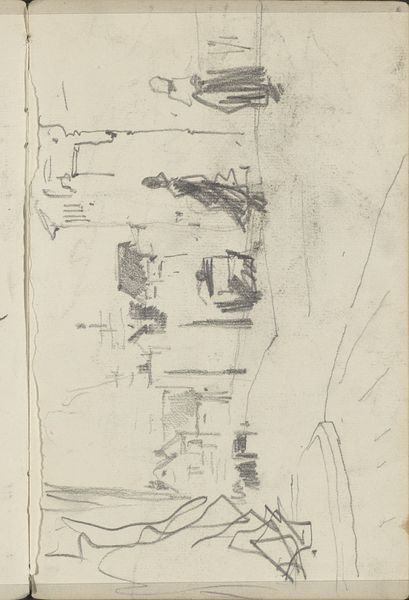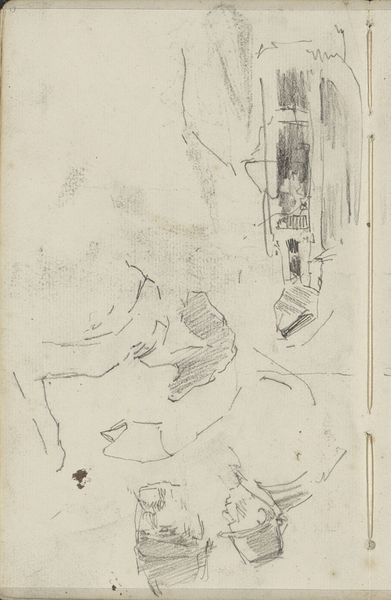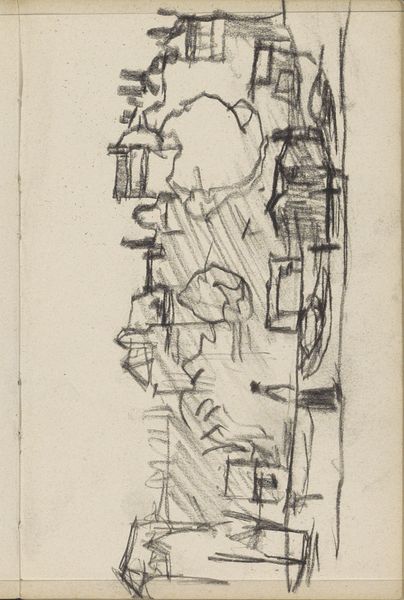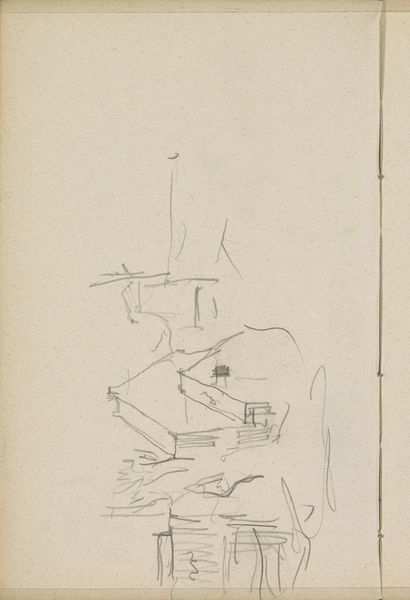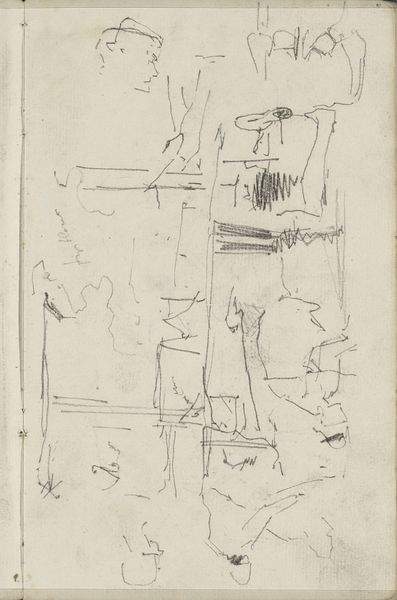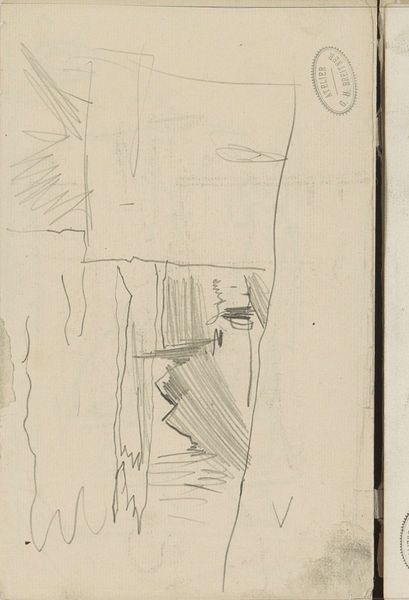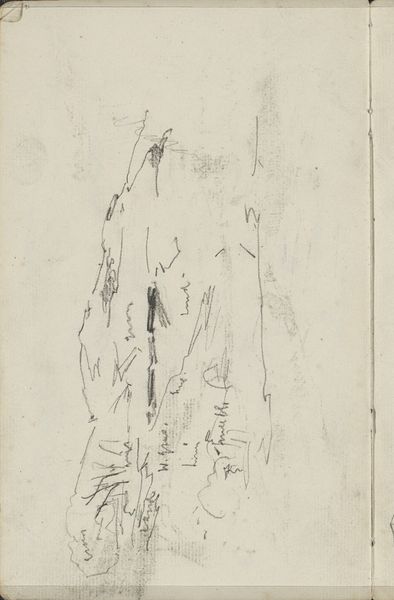
#
aged paper
#
toned paper
#
sketch book
#
personal sketchbook
#
idea generation sketch
#
sketchwork
#
ink drawing experimentation
#
pen-ink sketch
#
sketchbook drawing
#
sketchbook art
Copyright: Rijks Museum: Open Domain
Editor: Here we have "Studie," a sketch from around 1883-1885 by George Hendrik Breitner, held at the Rijksmuseum. It's a very faint ink drawing on aged paper. The figures are barely there; it feels like catching a fleeting moment. What do you see in this piece? Curator: This sketch offers a glimpse into Breitner's process and the societal context he navigated. It’s not just a preparatory drawing, but a record of his gaze and, perhaps unintentionally, the power dynamics inherent in that gaze. Considering his later depictions of working-class women, what does this initial, almost ghostly, rendering tell us about how he saw his subjects, initially? Editor: That's interesting. It's almost like they're fading into the background. Do you think that was intentional? Curator: Maybe. Or maybe it was an unconscious reflection of the social invisibility often imposed upon marginalized groups. The lack of detail could also symbolize a lack of individual recognition, turning people into types rather than individuals. How does that idea resonate with you? Editor: It makes me think about representation and who gets to be seen, truly seen, in art and in society. The quick sketch could be a symptom of the way society doesn't always stop to see those it considers marginal. Curator: Exactly! Breitner’s work, while celebrated, also invites critical examination of his position as a male artist capturing—and perhaps inadvertently, othering—the women around him. So how does that affect how you see it? Editor: I'm going to be thinking a lot more about the artist's perspective, the power that gives, and who might be missing from the frame entirely. Curator: Precisely. Art isn't created in a vacuum. Thinking about it through this perspective allows us to understand it beyond face value.
Comments
No comments
Be the first to comment and join the conversation on the ultimate creative platform.
